100g
Showing 2951–3000 of 3537 results
-
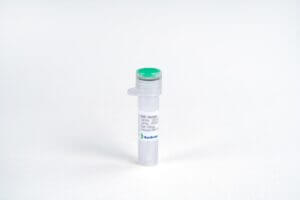
SARS-CoV-2 Nucleocapsid protein (G204R, R203K), His Tag
$327.75 Add to cart View Product DetailsSARS-CoV-2 (Severe Acute Respiratory
Syndrome Coronavirus 2) also known as 2019-nCoV (2019 Novel Coronavirus) is a virus that causes illnesses ranging from the common cold to severe diseases. Recently, the new B.1.1.529 variant was confirmed in South Africa and preliminary evidence suggests an increased risk of reinfection with this variant. The B.1.1.529 variant was first reported to WHO on 24 November 2021 and WHO has designated this variant as a VOC (Variant of Concern), named Omicron. There are more than 30 mutations in the spike protein. -

SARS-CoV-2 Nucleocapsid protein (His Tag)
$327.75 Add to cart View Product DetailsSARS-CoV-2 (Severe Acute Respiratory Syndrome Coronavirus 2) also known as 2019-nCoV (2019 Novel Coronavirus) is a virus that causes illnesses ranging from the common cold to severe diseases. SARS-CoV-2 Nucleocapsid Protein is associated with nucleic acid. It is the most abundant protein for coronavirus. Because of the strong immunogenicity of coronavirus Nucleocapsid, it is believed that SARS-CoV-2 Nucleocapsid Protein has potential value for the diagnosis of the virus.
-

SARS-CoV-2 Spike (484Q) Antibody (Q8), mAb, Mouse
$240.64 Add to cart View Product DetailsSARS-CoV-2 Spike (484Q) Antibody (Q8), mAb, Mouse is specific for 484Q site of B.1.617 SARS-CoV-2. This product can recognize single mutant (E484Q) and double mutant (L452R, E484Q), but can not recognize the wild type and single mutant (L452R).
-

SARS-CoV-2 Spike (E484) Neutralizing Antibody (COV2109)
$323.44 Add to cart View Product DetailsThe product is specific for E484 site of wild-type RBD.For specific mutant protein, the product recognizes wild-type RBD, RBD single mutant (N501Y), and RBD single mutant (K417N), but not recognizes RBD single mutant (E484K) and RBD triple mutant (K417N, E484K and N501Y), as seen in Figure 2.
-

SARS-CoV-2 Spike (N501) Neutralizing Antibody (COV2110)
$323.44 Add to cart View Product DetailsThe product is specific for N501 site of wild-type RBD.For specific mutant protein, the product recognizes wild-type RBD, RBD single mutant (E484K), and RBD single mutant (K417N), but not recognizes RBD single mutant (N501Y) and RBD triple mutant (K417N, E484K and N501Y), as seen in Figure 2.
-

SARS-CoV-2 Spike protein (ECD, His & Flag Tag)
$327.75 Add to cart View Product DetailsSARS-CoV-2 (Severe Acute Respiratory Syndrome Coronavirus 2) also known as 2019-nCoV (2019 Novel Coronavirus) is a virus that causes illnesses ranging from the common cold to severe diseases. SARS-CoV-2 Spike Protein is composed of S1 domain and S2 domain. S1 contains a receptor-binding domain (RBD) that can specifically bind to angiotensin-converting enzyme 2 (ACE2), the receptor on target cells. ECD is the extra cellular domain of spike protein.
-
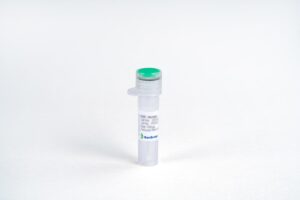
SARS-CoV-2 Spike protein (RBD, E484K, K417N, N501Y, His & Avi Tag)
$327.75 Add to cart View Product DetailsSARS-CoV-2 (Severe Acute Respiratory Syndrome Coronavirus 2) also known as 2019-nCoV (2019 Novel Coronavirus) is a virus that causes illnesses ranging from the common cold to severe diseases. SARS-CoV-2 Spike Protein is composed of S1 domain and S2 domain. S1 contains a receptor-binding domain (RBD) that can specifically bind to angiotensin-converting enzyme 2 (ACE2), the receptor on target cells. It is believed that SARS-CoV-2 Spike Protein (RBD) has potential value for the diagnosis of the virus.
-

SARS-CoV-2 Spike protein (RBD, E484K, K417T, N501Y, Avi & His Tag)
$327.75 Add to cart View Product DetailsSARS-CoV-2 (Severe Acute Respiratory Syndrome Coronavirus 2) also known as 2019-nCoV (2019 Novel Coronavirus) is a virus that causes illnesses ranging from the common cold to severe diseases. Lineage P.1, also known as the Brazil(ian) variant is one of the variants of SARS-CoV-2. This variant has 17 amino acid changes, ten of which are in its spike protein, including these three designated to be of particular concern: N501Y, E484K and K417T. SARS-CoV-2 Spike protein (RBD, E484K, K417T, N501Y, Avi & His Tag) carries a Avi Tag followed by a polyhistidine tag at the C-terminus. It has high binding affinity to human chimeric ACE2.
-

SARS-CoV-2 Spike protein (RBD, His & Avi tag)
$327.75 Add to cart View Product DetailsSARS-CoV-2 (Severe Acute Respiratory Syndrome Coronavirus 2) also known as 2019-nCoV (2019 Novel Coronavirus) is a virus that causes illnesses ranging from the common cold to severe diseases. SARS-CoV-2 Spike Protein is composed of S1 domain and S2 domain. S1 contains a receptor-binding domain (RBD) that can specifically bind to angiotensin-converting enzyme 2 (ACE2), the receptor on target cells. It is believed that SARS-CoV-2 Spike Protein (RBD) has potential value for the diagnosis of the virus.
-

SARS-CoV-2 Spike protein (RBD, His Tag)
$327.75 Add to cart View Product DetailsSARS-CoV-2 (Severe Acute Respiratory Syndrome Coronavirus 2) also known as 2019-nCoV (2019 Novel Coronavirus) is a virus that causes illnesses ranging from the common cold to severe diseases. SARS-CoV-2 Spike Protein is composed of S1 domain and S2 domain. S1 contains a receptor-binding domain (RBD) that can specifically bind to angiotensin-converting enzyme 2 (ACE2), the receptor on target cells. It is believed that SARS-CoV-2 Spike Protein (RBD) has potential value for the diagnosis of the virus.
-

SARS-CoV-2 Spike protein (RBD, L452R, T478K, Avi & His Tag)
$327.75 Add to cart View Product DetailsSARS-CoV-2 (Severe Acute Respiratory Syndrome Coronavirus 2) also known as 2019-nCoV (2019 Novel Coronavirus) is a virus that causes illnesses ranging from the common cold to severe diseases. As of May 2021, three sublineages have been found. Despite its name, B.1.617.3 was the first sublineage of this variant to be detected, in October 2020 in India. This sublineage has remained relatively uncommon compared to the two other sublineages, B.1.617.1 (also known as variant Kappa) and B.1.617.2 (also known as variant Delta), both of which were first detected in December 2020. This variant has the double mutations E484Q and L452R in the spike proteins. Emerging research suggests the variant may be more transmissible than previously evolved ones. Whether the effectiveness of currently-deployed vaccines is affected remains under investigation. Moreover, the sublineage B.1.617.2 has been redesignated as “variant of concern” (VOC-21APR-02) in May 2021, which spreads more quickly than the original version of the virus.
-

SARS-CoV-2 Spike protein (RBD, mFc Tag, CHO-expressed)
$327.75 Add to cart View Product DetailsSARS-CoV-2 (Severe Acute Respiratory Syndrome Coronavirus 2) also known as 2019-nCoV (2019 Novel Coronavirus) is a virus that causes illnesses ranging from the common cold to severe diseases. SARS-CoV-2 Spike Protein is composed of S1 domain and S2 domain. S1 contains a receptor-binding domain (RBD) that can specifically bind to angiotensin-converting enzyme 2 (ACE2), the receptor on target cells. It is believed that SARS-CoV-2 Spike Protein (RBD) has potential value for the diagnosis of the virus.
-

SARS-CoV-2 Spike protein (RBD, mFc Tag)
$327.75 Add to cart View Product DetailsSARS-CoV-2 (Severe Acute Respiratory Syndrome Coronavirus 2) also known as 2019-nCoV (2019 Novel Coronavirus) is a virus that causes illnesses ranging from the common cold to severe diseases. SARS-CoV-2 Spike Protein is composed of S1 domain and S2 domain. S1 contains a receptor-binding domain (RBD) that can specifically bind to angiotensin-converting enzyme 2 (ACE2), the receptor on target cells. It is believed that SARS-CoV-2 Spike Protein (RBD) has potential value for the diagnosis of the virus.
-

SARS-CoV-2 Spike protein (RBD, N501Y, His & Avi Tag)
$327.75 Add to cart View Product DetailsSARS-CoV-2 (Severe Acute Respiratory Syndrome Coronavirus 2) also known as 2019-nCoV (2019 Novel Coronavirus) is a virus that causes illnesses ranging from the common cold to severe diseases. The spike protein mutation N501Y is one of six key contact residues within the receptor-binding domain (RBD) and has been identified as increasing binding affinity to human and murine ACE2.
-

SARS-CoV-2 Spike protein (S1, D614G, His Tag)
$327.75 Add to cart View Product DetailsSARS-CoV-2 (Severe Acute Respiratory Syndrome Coronavirus 2) also known as 2019-nCoV (2019 Novel Coronavirus) is a virus that causes illnesses ranging from the common cold to severe diseases. The spike protein mutation D614G became dominant during the globally pandemic. The D614G mutation enhances its replication ability in upper respiratory tract, transmission ability and viral loads in the patients’ lung epithelial cells. It may also affect vaccine efficacy and antibody therapy.
-

SARS-CoV-2 Spike protein (S1, His Tag, CHO-expressed)
$327.75 Add to cart View Product DetailsSARS-CoV-2 (Severe Acute Respiratory Syndrome Coronavirus 2) also known as 2019-nCoV (2019 Novel Coronavirus) is a virus that causes illnesses ranging from the common cold to severe diseases. SARS-CoV-2 Spike Protein is composed of S1 domain and S2 domain. S1 contains a receptor-binding domain (RBD) that can specifically bind to angiotensin-converting enzyme 2 (ACE2), the receptor on target cells. S protein plays an important role in the induction of neutralizing antibodies and T-cell responses, as well as protective immunity.
-

SARS-CoV-2 Spike protein (S1, His Tag)
$327.75 Add to cart View Product DetailsSARS-CoV-2 (Severe Acute Respiratory Syndrome Coronavirus 2) also known as 2019-nCoV (2019 Novel Coronavirus) is a virus that causes illnesses ranging from the common cold to severe diseases. SARS-CoV-2 Spike Protein is composed of S1 domain and S2 domain. S1 contains a receptor-binding domain (RBD) that can specifically bind to angiotensin-converting enzyme 2 (ACE2), the receptor on target cells. S protein plays an important role in the induction of neutralizing antibodies and T-cell responses, as well as protective immunity.
-

SARS-CoV-2 Spike protein (S1, T19R, G142D, del 156-157, R158G, L452R, T478K, D614G, P681R, His Tag)
$327.75 Add to cart View Product DetailsSARS-CoV-2 (Severe Acute Respiratory Syndrome Coronavirus 2) also known as 2019-nCoV (2019 Novel Coronavirus) is a virus that causes illnesses ranging from the common cold to severe diseases. As of May 2021, three sublineages have been found. Despite its name, B.1.617.3 was the first sublineage of this variant to be detected, in October 2020 in India. This sublineage has remained relatively uncommon compared to the two other sublineages, B.1.617.1 (also known as variant Kappa) and B.1.617.2 (also known as variant Delta), both of which were first detected in December 2020. This variant has the double mutations E484Q and L452R in the spike proteins. Emerging research suggests the variant may be more transmissible than previously evolved ones. Whether the effectiveness of currently-deployed vaccines is affected remains under investigation. Moreover, the sublineage B.1.617.2 has been redesignated as “variant of concern” (VOC-21APR-02) in May 2021, which spreads more quickly than the original version of the virus.
-

SARS-CoV-2 Spike protein (S1)
$327.75 Add to cart View Product DetailsSARS-CoV-2 (Severe Acute Respiratory Syndrome Coronavirus 2) also known as 2019-nCoV (2019 Novel Coronavirus) is a virus that causes illnesses ranging from the common cold to severe diseases. SARS-CoV-2 Spike Protein is composed of S1 domain and S2 domain. S1 contains a receptor-binding domain (RBD) that can specifically bind to angiotensin-converting enzyme 2 (ACE2), the receptor on target cells. S protein plays an important role in the induction of neutralizing-antibodies and T-cell responses, as well as protective immunity.
-

SARS-CoV-2 Spike protein RBD, Omicron Variant, His Tag
$327.75 Add to cart View Product DetailsSARS-CoV-2 (Severe Acute Respiratory
Syndrome Coronavirus 2) also known as 2019-nCoV (2019 Novel Coronavirus) is a virus that causes illnesses ranging from the common cold to severe diseases. Recently, the new B.1.1.529 variant was confirmed in South Africa and preliminary evidence suggests an increased risk of reinfection with this variant. The B.1.1.529 variant was first reported to WHO on 24 November 2021 and WHO has designated this variant as a VOC (Variant of Concern), named Omicron. There are more than 30 mutations in the spike protein. -

SARS-CoV-2 Spike protein S1, Omicron Variant, His Tag
$327.75 Add to cart View Product DetailsSARS-CoV-2 (Severe Acute Respiratory
Syndrome Coronavirus 2) also known as 2019-nCoV (2019 Novel Coronavirus) is a virus that causes illnesses ranging from the common cold to severe diseases. Recently, the new B.1.1.529 variant was confirmed in South Africa and preliminary evidence suggests an increased risk of reinfection with this variant. The B.1.1.529 variant was first reported to WHO on 24 November 2021 and WHO has designated this variant as a VOC (Variant of Concern), named Omicron. There are more than 30 mutations in the spike protein. -
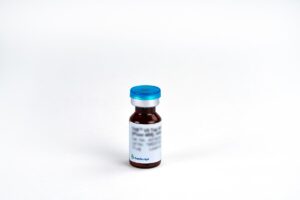
SARS-CoV-2 Spike S1 Antibody (HC2001), Human Chimeric
$323.44 Add to cart View Product DetailsThe product is specific for SARS-CoV-2 Spike Protein S1 subunit and its RBD domain.
-

SARS-CoV-2 Spike S1 Antibody (hIgA2001), Human Chimeric
$370.01 Add to cart View Product DetailsThe product is specific for SARS-CoV-2 Spike Protein S1 subunit and its RBD domain.
-
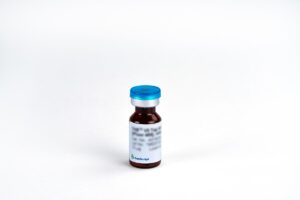
SARS-CoV-2 Spike S1 Antibody (hIgM2001), Human Chimeric
$370.01 Add to cart View Product DetailsThe product is specific for SARS-CoV-2 Spike Protein S1 subunit and its RBD domain.
-
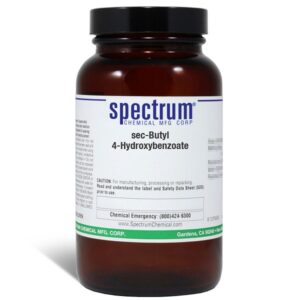
sec-Butyl 4-Hydroxybenzoate
$476.09 Add to cart View Product Detailssec-Butyl 4-Hydroxybenzoate
-
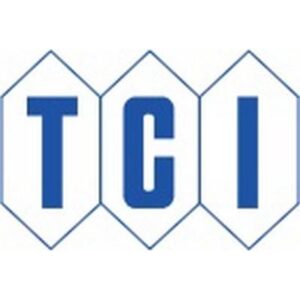
sec-Butylmagnesium Bromide, (16 Percent in Tetrahydrofuran, ca. 1mol/L)
$216.98 Add to cart View Product Detailssec-Butylmagnesium Bromide, (16 Percent in Tetrahydrofuran, ca. 1mol/L)
-

Selenium Dioxide, Purified
$216.96 Add to cart View Product DetailsSelenium Dioxide, Purified
-
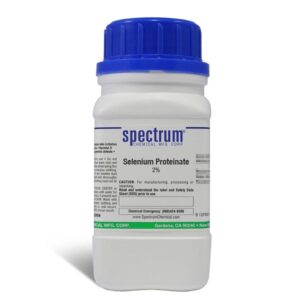
Selenium Proteinate, 2 Percent
$84.25 Add to cart View Product DetailsSelenium Proteinate, 2 Percent
-
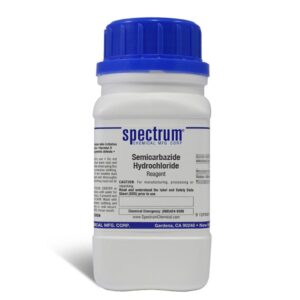
Semicarbazide Hydrochloride, Reagent
$100.29 Add to cart View Product DetailsSemicarbazide Hydrochloride, Reagent
-

Sephadex LH-20
$1,168.69 Add to cart View Product DetailsMolecular Formula : No Data Available
-

Siglec-10 Fc Chimera, Human
$189.75 Add to cart View Product DetailsSiglec-10 is immune system-restricted and highly expressed in peripheral blood leukocytes. Siglec-10 preferably binds to α-2,3- or α-2,6-linked sialic acid (similarity). Siglec10 is involved in the negative regulation of B cell antigen receptor signal transduction. The inhibition of B cell activation depends on PTPN6/SHP-1 (by similarity). The binding of Siglec10 to CD24 may be involved in the selective suppression of the immune response (by similarity) to risk-related molecular patterns (DAMPs) (such as HMGB1, HSP70 and HSP90). The combination of Siglec10 and CD24 may regulate the immune response of natural killer (NK) cells. Play a role in controlling autoimmunity (by similarity). In the process of initiating an adaptive immune response by CD8-α+ dendritic cells, cross-presentation is inhibited by weakening the formation of MHC class I peptide complexes. The function seems to imply the recruitment of PTPN6/SHP-1, which dephosphorylates NCF1 of the NADPH oxidase complex, thereby promoting phagosome acidification (by similarity).
-

Siglec-15 Fc Chimera, Human
$189.75 Add to cart View Product DetailsSiglec-15 preferentially recognizes the Neu5Acalpha2-6GalNAcalpha- structure. Siglec-15 associates with the activating adaptor proteins DNAX activation protein (DAP)12 and DAP10 via its lysine residue in the transmembrane domain. Siglec-15 is the second human Siglec identified to have an activating signaling potential; unlike Siglec-14, however, it does not have an inhibitory counterpart.
-

Siglec-2/CD22, hFc, Human
$189.75 Add to cart View Product DetailsCD22, or cluster of differentiation-22, is a molecule belonging to the SIGLEC family of lectins. It is found on the surface of mature B cells and to a lesser extent on some immature B cells. CD22 a member of the immunoglobulin superfamily. CD22 functions as an inhibitory receptor for B cell receptor (BCR) signaling. It is also involved in the B cell trafficking to Peyer’s patches in mice.
-
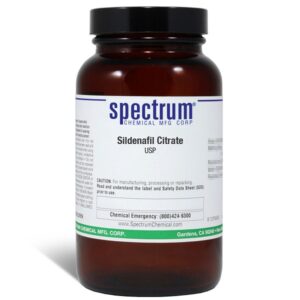
Sildenafil Citrate, USP
$371.02 Add to cart View Product DetailsSildenafil Citrate, USP
-
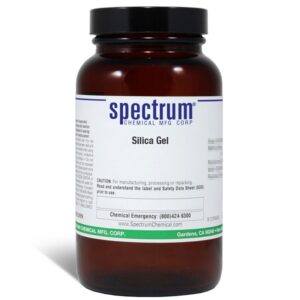
Silica Gel, 230-400 Mesh
$143.93 Add to cart View Product DetailsSilica Gel, 230-400 Mesh
-
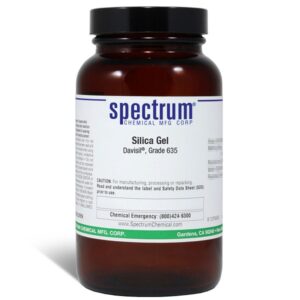
Silica Gel, Davisil(R), Grade 635, 60-100 Mesh, 60A
$153.17 Add to cart View Product DetailsSilica Gel, Davisil(R), Grade 635, 60-100 Mesh, 60A
-
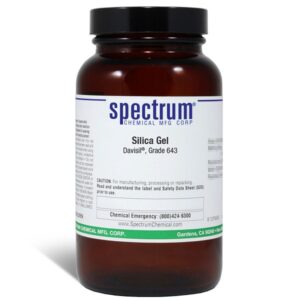
Silica Gel, Davisil(R), Grade 643, 200-425 Mesh, 150A
$137.29 Add to cart View Product DetailsSilica Gel, Davisil(R), Grade 643, 200-425 Mesh, 150A
-
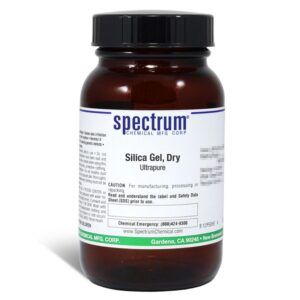
Silica Gel, Dry, 0.001 in. Thick, Ultrapure
$212.80 Add to cart View Product DetailsSilica Gel, Dry, 0.001 in. Thick, Ultrapure
-
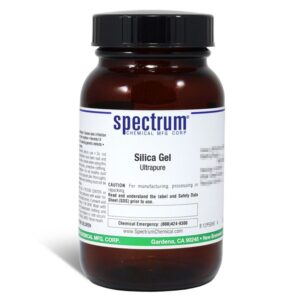
Silica Gel, For Chromatography200-500 Micron (35-70 Mesh), 90A, Ultrapure
$85.53 Add to cart View Product DetailsSilica Gel, For Chromatography200-500 Micron (35-70 Mesh), 90A, Ultrapure
-
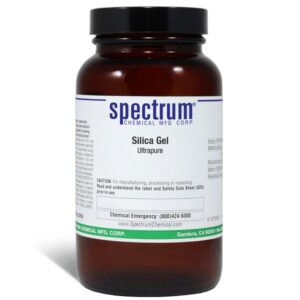
Silica Gel, For Chromatography40-63 Micron (230-400 Mesh), 60A, Ultrapure
$75.66 Add to cart View Product DetailsSilica Gel, For Chromatography40-63 Micron (230-400 Mesh), 60A, Ultrapure
-
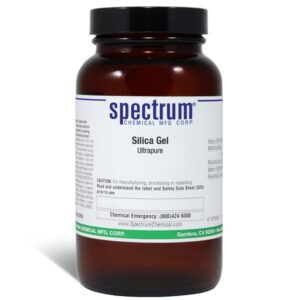
Silica Gel, For High Resolution Chromatography and TLC 5-20 Micron, 60A, Ultrapure
$424.43 Add to cart View Product DetailsSilica Gel, For High Resolution Chromatography and TLC 5-20 Micron, 60A, Ultrapure
-
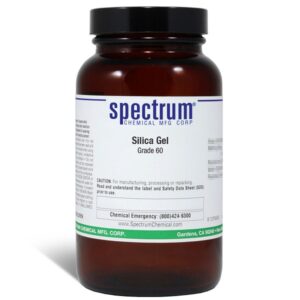
Silica Gel, Grade 60, 60-200 Micron, 60A
$121.99 Add to cart View Product DetailsSilica Gel, Grade 60, 60-200 Micron, 60A
-
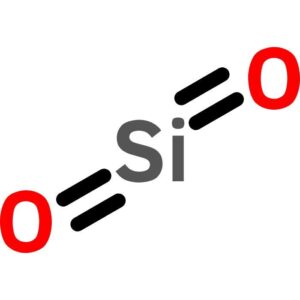
Silica Gel, Grade 633, 200-425 Mesh, 60A
$143.93 Add to cart View Product DetailsSilica Gel, Grade 633, 200-425 Mesh, 60A
-
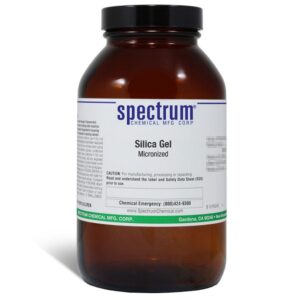
Silica Gel, Micronized
$143.24 Add to cart View Product DetailsSilica Gel, Micronized
-
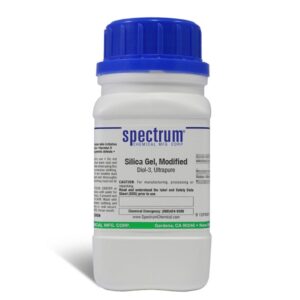
Silica Gel, Modified, Diol-3, 40-63 Micron, Ultrapure
$1,665.71 Add to cart View Product DetailsSilica Gel, Modified, Diol-3, 40-63 Micron, Ultrapure
-
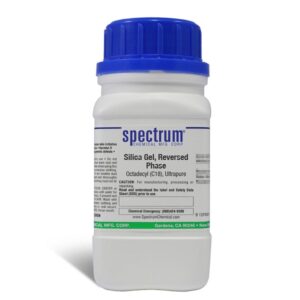
Silica Gel, Reversed Phase, Octadecyl (C18), 40-63 Micron, Ultrapure
$1,641.90 Add to cart View Product DetailsSilica Gel, Reversed Phase, Octadecyl (C18), 40-63 Micron, Ultrapure
-
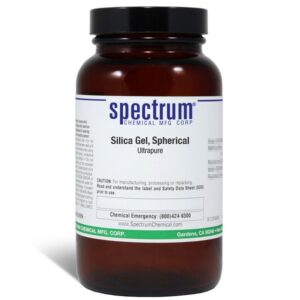
Silica Gel, Spherical, For SPE, Cartridges and Column Packing75-200 Micron, 300A, Ultrapure
$250.63 Add to cart View Product DetailsSilica Gel, Spherical, For SPE, Cartridges and Column Packing75-200 Micron, 300A, Ultrapure
-
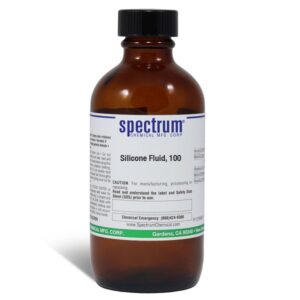
Silicone Fluid, 100
$58.50 Add to cart View Product DetailsSilicone Fluid, 100
-
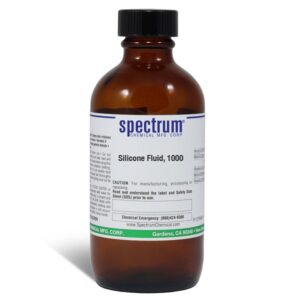
Silicone Fluid, 1000
$59.71 Add to cart View Product DetailsSilicone Fluid, 1000
-

Silver (II) Oxide
$2,962.41 Add to cart View Product DetailsSilver (II) Oxide






